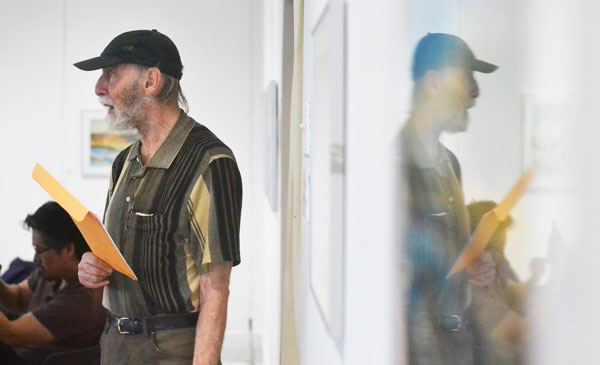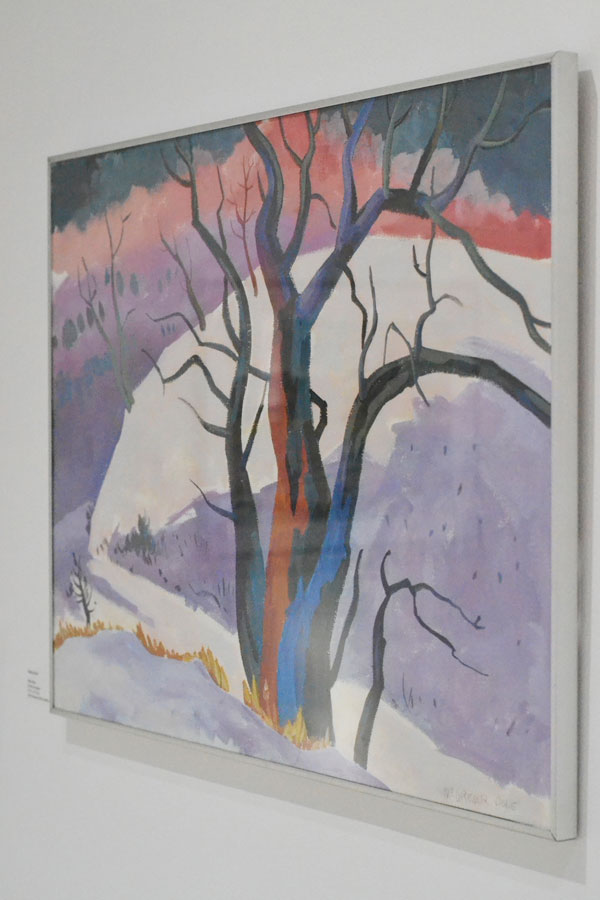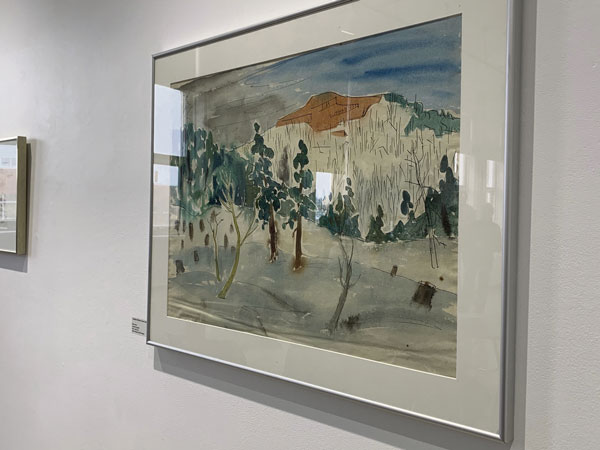
“Mac, in a way, is looking into the future—what will happen if nature is allowed to do what it does.”
The exhibit in Prince Albert’s John V. Hicks gallery displays artwork that’s preserved “for people that are going to be here 100 years from now.”
That’s according to Russ Mode, the guest curator for Mac Hone Landscapes.
He said “When we talk about nature, things change. Sometimes very slowly, sometimes very rapidly”—nevertheless, it’s important to save images that capture the current state of nature.
About 30 people joined Mode for a ‘Lunch & Learn’ event on Thursday afternoon. He walked along the bright white walls of the gallery, explaining where exactly some of the recreated landscapes are located.
Mode also highlighted Hone’s broad range of styles. A recurring theme was his love for purple, especially when painting winter scenes.

Mode walked up to one untitled acrylic on paper piece and posed a question to the room.
“Those of you who’ve travelled from Saskatoon to Regina, you pass through the Qu’Appelle Valley and…down the right hand side there is a large brick building sitting on top of the hillside,” he said. He told everyone to linger on what building it is and what the landscape around it currently looks like.
It turns out that brick building is the Living Skies Retreat, which is nestled on the side of the valley near Lumsden, Sask. It would have been a common site for Hone towards the end of his life as he and his wife Beth lived in the town until they passed away.
“If there was no human activity, this is what that area would look like,” said Mode as he pointed to the painting.
“After a period of 20 years, you would have the trees growing, you would have the trees in variation. So Mac, in a way, is looking into the future—what will happen if nature is allowed to do what it does.”

After his presentation, Mode—who has an education degree and a bachelor of science with majors in chemistry and geology—explained more about the process of ecological succession.
If completely left undisturbed, poplar trees protect the growing spruce as they die and fall. Eventually, the area becomes a spruce forest, which will likely burn.
“It is a constant cycle and humans have the ability to interrupt those cycles so commonly and so frequently,” he said.
Mode singled out the painting of the Living Skies Retreat as one of his two favourites from the 15 pieces displayed.
He said Hone was best known for his abstract work and prints, but he wanted to highlight his unique collection of landscapes.
Speaking about what it’s like to display the pieces for the first time, Mode said it was difficult to pick the works that best represented Hone as a landscape artist.
“I am the lens through which the public gets to see what was in our collection and what I have to do is come up with the best representative works that we have, but at the same time be representative of the type of work that he did,” said Mode.
He knew Hone and his wife personally through the Saskatchewan Teachers Federation.
Mac Hone Landscapes is on display in the John V. Hicks gallery until Monday.
Mode has been volunteering between 15 and 20 hours per week at the Mann Art Gallery for the past year and a half.

